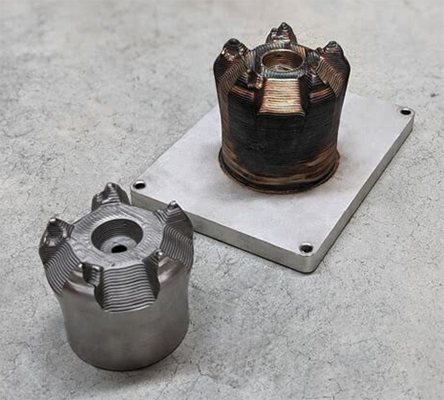 The manufacturing industry has witnessed a revolutionary transformation with the advent of additive manufacturing, which has introduced innovative production solutions. In the field of repairs, additive manufacturing, particularly with Wire-DED systems, presents numerous notable advantages compared to conventional repair methods.
The manufacturing industry has witnessed a revolutionary transformation with the advent of additive manufacturing, which has introduced innovative production solutions. In the field of repairs, additive manufacturing, particularly with Wire-DED systems, presents numerous notable advantages compared to conventional repair methods.
Cost-Effectiveness: Repairing parts using additive manufacturing can be highly cost-effective. Traditional repairs often involve manual processes which can be time-consuming and expensive. Moreover, DED systems, as Meltio’s technology, allow for precise repairs by adding material layer by layer, minimizing waste and reducing the need for additional tooling or extensive machining. This can result in substantial cost savings.
Design flexibility: Additive manufacturing enables unprecedented design freedom. When repairing parts, traditional methods often require conforming to the original design, which may not be optimal for repair purposes. Additive manufacturing allows for the creation of customized designs tailored to address the repair requirements. This flexibility enables the repair of complex geometries and the incorporation of enhanced features or reinforcements, leading to better performance and durability.
Reduced lead time: Repairing parts traditionally can involve prolonged lead times due to the need to source replacement components or wait for specialized equipment and skilled labor. Additive manufacturing can significantly reduce these lead times by eliminating the reliance on extensive supply chains.
Accessibility and decentralized repairs: Additive manufacturing has the potential to decentralize repair capabilities, making repairs more accessible and efficient. With Meltio’s technology, individuals and organizations can perform repairs in-house, reducing the need to outsource repairs or rely on specialized repair facilities. This accessibility can lead to faster turnaround times, reduced transportation costs, and increased independence in maintaining and repairing equipment.
Consistency: Repair applications with metal 3D printing are automated and therefore enhance the gain in operability. The system follows pre-programmed instructions, eliminating human error and variations that may occur in manual processes. This results in high-quality and repeatable repairs, ensuring consistent performance of the repaired components.
Safety: The ability to repair complex components with precision minimizes the risk of improper fits or compromised structural integrity, therefore there is a reduction of injuries associated with manual repair processes.
Click below to learn more about Meltio’s 3D printing technology.







Leave A Comment